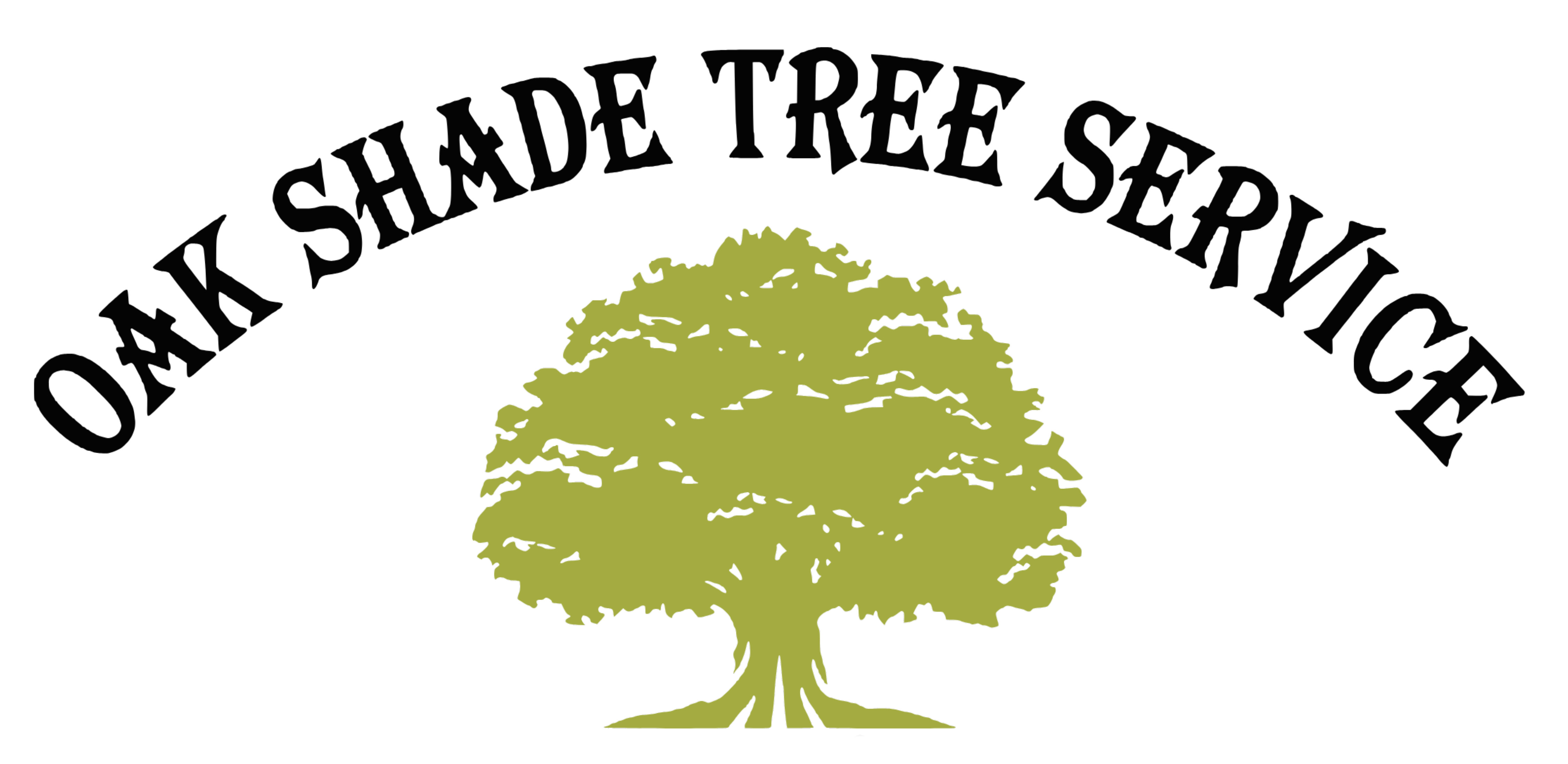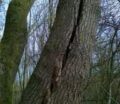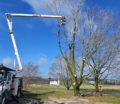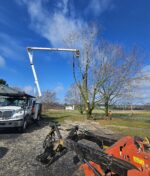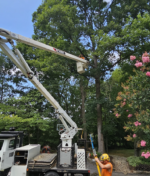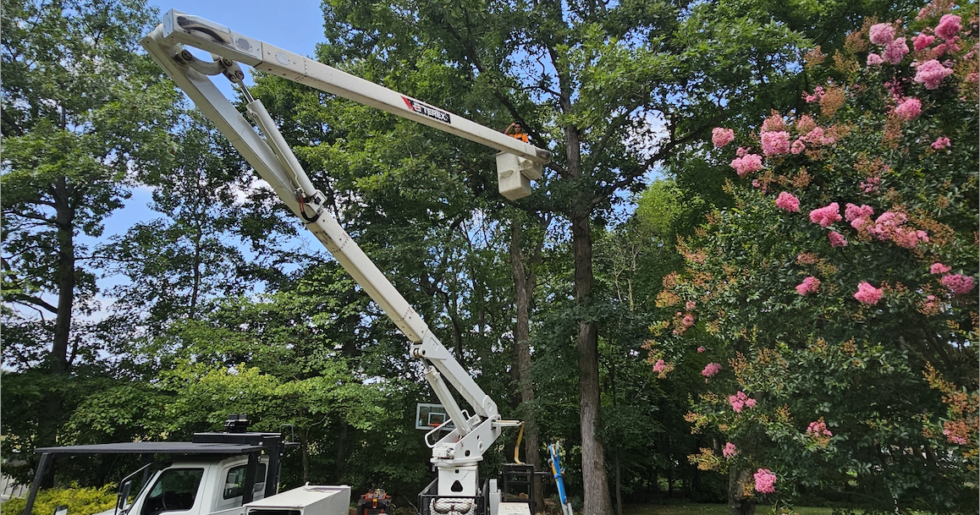
Bad tree service practices can lead to significant harm to trees, landscapes, and even property.
Here are some of the most common poor practices in tree care:
- Topping Trees: This is when the top of the tree is cut off, leaving large, unsightly stubs. It severely weakens the tree, promotes decay, and can lead to long-term health problems or death.
- Improper Pruning: Cutting branches at the wrong place or using incorrect techniques can damage trees, leaving them vulnerable to disease, pests, and decay. Poor pruning can also disrupt a tree’s natural growth pattern.
- Overpruning or Excessive Removal of Branches: Removing too many branches at once can stress the tree, reducing its ability to photosynthesize and recover from the cuts. This can weaken the tree and shorten its lifespan.
- Tree Spiking: Using climbing spikes for non-removal work can damage the bark and cambium layer of a tree, opening it up to infections and pests. This practice should be avoided unless the tree is being removed.
- Improper Use of Equipment: Using heavy machinery around trees, especially near the root zone, can cause compaction of the soil, which reduces oxygen availability to the roots, negatively affecting tree health.
- Neglecting Safety Standards: Tree work is inherently dangerous. Companies that don’t follow safety standards put workers and property at risk, which can lead to accidents, injuries, and property damage.
- Leaving Stubs After Pruning: Cutting branches too far away from the trunk leaves stubs that don’t heal properly, leading to decay and attracting pests.
- Failing to Address Root Damage: Excavation or construction near trees can damage roots. Ignoring this can lead to tree instability and eventual decline.
- Improper Tree Removal: Failing to plan and execute safe tree removal can result in damage to nearby property, power lines, or even injury to people.
Hiring a knowledgeable and reputable tree service is key to avoiding these harmful practices.
